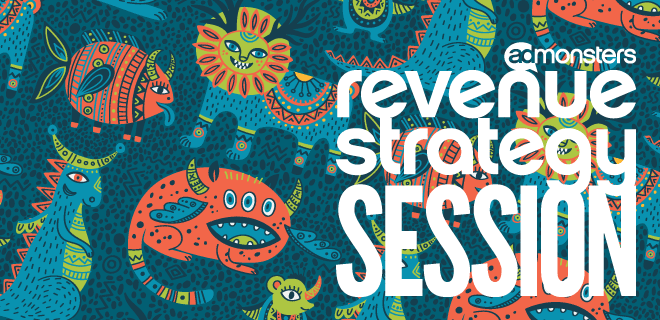
As we gear up for 2022 (and beyond) many publishers are giving contextual advertising a fresh look.
Whether it’s evaluating contextual as a key performance driver amidst the decline of third-party cookies and mobile identifiers, or new use cases—like extending contextual audiences into CTV—there is so much more to consider about the practice of segmenting and analyzing content.
So in advance of our upcoming Revenue Strategy Session, we caught up with Michael Guzewicz, Director of Strategic Partnerships at OpenX, for a quick Q&A about how the company is working to define (and redefine) contextual in conjunction with publishers.
Tameka Kee: “Contextual data” means different things to different stakeholders. In the rush to find cookieless targeting solutions, there seems to be a rush to redefine it. How does OpenX define this—and more specifically—what does it mean from a publisher monetization POV?
 Michael Guzewicz: At the most basic level, contextual is any data that describes the content or environment the viewer is interacting with, rather than the viewer him/herself, and for companies like OpenX, this means powering targeting based on the data signals like categories, URLs, characteristics of device, ad units, etc.
Michael Guzewicz: At the most basic level, contextual is any data that describes the content or environment the viewer is interacting with, rather than the viewer him/herself, and for companies like OpenX, this means powering targeting based on the data signals like categories, URLs, characteristics of device, ad units, etc.
With the cookieless era approaching, buyers are exploring new ways to target campaigns without user IDs or IDFAs, and as that has happened, the definition of what exactly is contextual has become more ambiguous. On our end, we are open-minded to these various, new definitions, and our goal is to be able to facilitate contextual initiatives, however defined.
When it comes to publishers specifically, what is clear is as we move ahead, first-party data will be even more valuable, and this is where publishers, with their technical abilities and first-party data, can shape the contextual conversation.
TK: As a platform, you get to see both the buy-side and sell-side POV. What are you seeing in terms of how advertisers are wanting to use contextual data now vs. years (or even months) ago? Is it different from how publishers are wanting to use (or offer) it? Is there a middle ground?
MG: What advertisers really care about is delivering ads to the relevant users in the right time and context, and for the buy-side, the most common use case is a branding campaign that is leveraging the context of the page. So for example, a tax app could aim to display their ads on a page focused on taxes and finance, near the April 15th deadline.
Advertisers also want assurances around sentiment, editorial voice, and intent. This isn’t a new demand, per se, but marketers are challenging the market to make this possible programmatically and at scale—and with greater precision. As an example: auto companies have contextually targeted auto-related content. These advertisers are now seeking another layer of assurances: is this content pro-auto? Anti-auto? How is my brand represented? Is there information about my competitors – and if so, what are they saying? These inputs, if calibrated correctly, can help marketers make decisions about when and where to purchase impressions.
On the publisher side, it’s always about driving revenue, but what is changing is that pubs are increasingly looking for help mixing their first-party data with contextually created content segments, and in some cases, they are looking for companies like OpenX to help with that.
Publishers also tend to prefer not to embed any other scripts that generate additional requests to send contextual signals somewhere, so they prefer remote technologies like crawlers to categorize their content.
Finally, it’s worth calling out that the demise of the third-party cookie is bringing publishers and advertisers closer together because of the value publishers bring with their first-party data and using this data to create contextual offerings.
TK: Standards like the IAB Tech Lab’s Content Taxonomy 3.0 are emerging—and are being seen as one of the solutions to the “contextual can’t scale” conundrum. Do you think a third-party taxonomy is necessary for contextual to scale? If so, what are your thoughts on how pubs can ensure that their content (and audiences) don’t get commoditized again in the rush to develop these standards?
MG: A taxonomy can be helpful in terms of providing a detailed, complex, and tiered content categorization framework, but publishers should also make sure other important contextual targeting signals are provided as well. Publishers can use their own relationship with the consumer and understanding of behaviors to develop effective and powerful contextual offerings for buyers, and they should embrace partners who can help them with their solutions. On our end, we work with publishers to ensure they expose contextual targeting signals in the bid stream and to execute their contextually curated deals with buyers, and that is an example of how ad tech can help.
We’ll continue this conversation (and dive even deeper) with a fireside chat with Leaf Group’s Scott Messer next Tuesday, Nov 16 @ 1pm EST / 10am PT, followed by publisher-only breakouts.
Want to join and get schooled on all things contextual? Click here to register for our Revenue Strategy Session: Vol 3—Contextually Speaking, now!